As an Amazon Associate I earn from qualifying purchases.
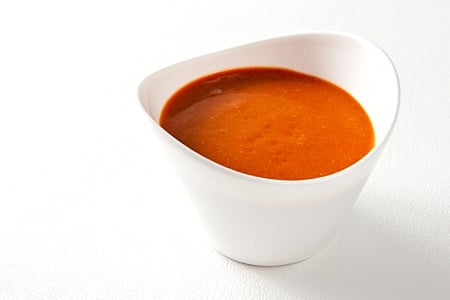
I’ve always wondered about who makes money on all those hot sauce bottles arrayed in the condiment aisle of the supermarket. Especially when it’s easy to make homemade hot sauce.
Think about it: My local Raley’s carries several dozen varieties of hot sauce, and there are thousands of brands of hot sauce out there, ranging from the venerable Tabasco (one of the only hot sauces I still buy) to the ridiculous Dave’s Insanity Sauce, which is so hot it really ought to be a controlled substance. It’s simply a case of too much choice, and not enough difference in the sauces to matter.
I think one of the reasons there is so much hot sauce on the market is because it is so easy to make at home.
(If you’re looking for more of a challenge, I have a recipe for a fermented Tabasco-style hot sauce, too.)
I am imagining all these inspired home cooks in Texas or Florida or New Jersey who were happy making their own sauce, when someone said: “You oughta bottle that!” They do, hemorrhage money, then promptly go out of business a year or so later. Mercifully, I’ve never been tempted to sell my own hot sauce. But if I did, it’d be this one.
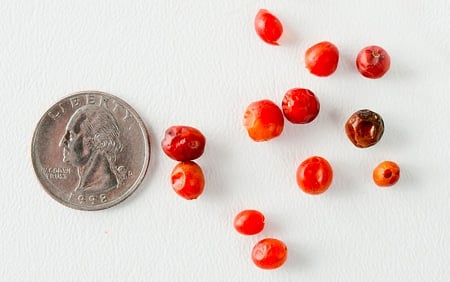
And since I am about to give you my recipe, I guess I won’t be making my fortune (or bankrupting myself) on “Hank’s Cray-zey Hawt Sauce” anytime soon. What makes my rendition of homemade sauce so special is the chile — I use wild chiles for this recipe.
Now before I go on, know that any chiles you want to use will work, fresh or dried. But my advice is to make your homemade hot sauce with a single type of chile at first, so you can really enjoy the nuances in that variety, whether it’s serranos, habaneros, poblanos, or any other type, even wild.
Yep. Wild chiles. They exist. Known mostly as chiltepin, pequin or bird’s eye chiles because, I suppose, they are small and round like a bird’s eye, these grow wild in much of Central America — and have the distinction of being the only chile peppers native to the United States. You can forage for them in southern Arizona, New Mexico and Texas, and they reportedly live in southern Florida as well.
I’ve known about chiltepins for years — I am a serious chile head — and I now finally grow them at home, so I have a stash now. You can buy them in Tucson, or in some Mexican markets, too. I’ve found fresh chile pequins in Mexican markets in Brownsville, Texas, for example. You can also buy chiltepin chiles through Gourmet Sleuth. Apparently when the harvest is on, locals drop what they’re doing to gather the little chiles because they bring such a high price — up to $30 a pound in some years.
You can also buy seeds online and grow your own, although the seeds are really hard to germinate; soaking them in chamomile tea for 2 days first will give you a better germination rate.
As for flavor, it’s smoky, hot and rich all at once. The closest store-bought equivalent I can come up with in flavor is Cholula hot sauce, which is another of my favorites. The chiltepin chiles whack you right up front, but then go away — it’s the opposite of a red jalapeno, whose heat can sneak up on you a few minutes later.
I use this hot sauce on pretty much everything: Eggs, Mexican food, cold chicken or pheasant, in tomato sauces, on clams… you get the point. Use it wherever you would use any normal hot sauce.
Homemade Hot Sauce
Ingredients
- 6 garlic cloves, chopped
- 1/2 cup chiltepin chiles, or 2/3 cup Thai chiles
- 1 teaspoon smoked salt
- 1/2 cup water
- 1 cup cider vinegar
- 2 tablespoons sweet paprika
- 1/4 teaspoon xanthan gum mixed with 2 tablespoons cold water
Instructions
- Put everything except the xanthan gum (if using) into a blender and puree for 1-2 minutes. You really want everything blitzed here, so if your blender heats up too much in 2 minutes, stop, let it cool, and continue.
- Pour the xanthan gum that's been mixed with the water into the blender, cover and buzz for another 30 seconds.
- Pour into a bowl or large jar and let this settle for 1 hour to allow all the trapped air you introduced into the sauce while blending to escape. If you skip this step your sauce will not hold together as well. Bottle and store in the fridge for up to 9 months.
Notes
Nutrition information is automatically calculated, so should only be used as an approximation.
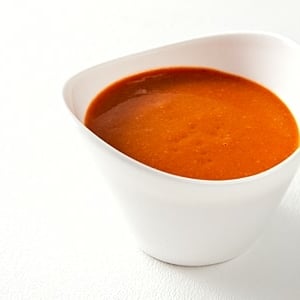
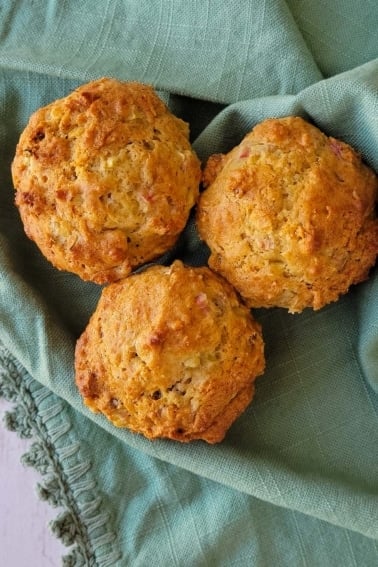

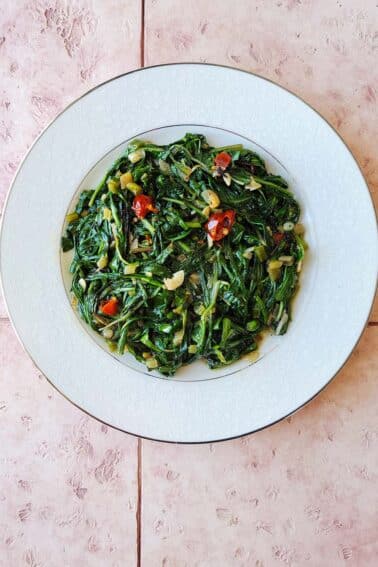
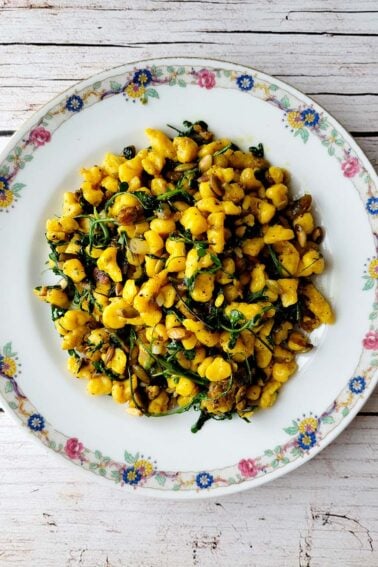
Made some salsa with one pint of homegrown diced tomatoes, 1/2 an onion, 1 bulb of garlic, a few other things and six ground chiltepins. I was reminded of the song “Come On Baby Light My Fire.”
I grew them myself. Planted 24 but only 2 came up. They still produced several hundred peppers. It took nine months from potting to producing fruit. I dried the fruit in a dehydrator a hundred at a time. I’m happy.
This recipe is both really simple and really delicious. I used green jalapenos (only pepper in my garden) and it had a really nice flavour and mild heat.
Good job Hank! I love those little peppers….and remember Dynamite comes in small packages!!! Thanks…
Made this with little red Thai hot peppers from my garden. Its fantastic! Very spicy but also quite flavorful.
Thank you for mentioning the use of xanthan gum, it makes it more professional looking. I use variations of this recipe for Christmas gifts and it has been a big hit every year.
Is there any reason why if I was loosly following this I would not want to simmer the ingrediants for a little bit?
in the salsa recipe do you use dried red chiles or fresh green ones?
Torjie: You can use either.
Any substitute for Xantham Gum?
Ricky: Not really, but without it you’ll just need to shake the bottle before using.
You can find almost everywhere in the part of Texas I live, even in up in the trunks of trees where birds have dropped and they germinated.
Hi Hank,
I’ve been growing chiltepins for four years now in southeastern Virginia. I started out buying a small potted plant at Anderon’s and planted it outdoors in the spring. By the time autumn came around, I was hooked on the fruit, so I dug up the plant and put it in a large pot. I kept it indoors over the winters, and set the pot outdoors over the summers. By managing the plant this way, I found that it would set fruit early in the summer and would continuously bloom in warm weather if I kept picking the ripe fruit.
Sometimes, I would discover a pepper that had eluded my harvest and was beginning to rot, so I would simply pick it off the plant and drop it into the pot at the base of the plant. Well, it didn’t take much more than a couple of rainy days until I had dozens of baby chiltepins sprouted in the pot! I transplanted the larger ones into other pots and gave them to family and friends. Needless to say, I have never had any difficulty germinating the seeds or growing the plants.
This single plant was so prolific, and the fruit so tasty, it seemed like the perfect medicine for me. So, I named my plant Dr. Pepper. He took good care of me for four years, but alas, I couldn’t return the courtesy last autumn. I left Dr. Pepper outdoors one evening, and the forecast low temperature was about 8 degrees F higher than it actually got. Dr. Pepper froze to death. I just left the pot outdoors all winter and into this spring thinking that I would have to solicit seeds from one of the people to whom I had gifted plants. But as I walked by the pot just a few moments ago, I was overjoyed to see about a dozen Baby Docs reaching for the sunshine!
So, I’m back to raising chiltepins, which is why I wanted to find a good sauce recipe when I found yours. Thank you for sharing it.
Warm regards,
Rob Schneider
Hampton, Virginia
Chiltepins have gone native in our yard. They’re nice little shrubs. The key is to scarify the seeds, i.e., soak them in vinegar. I forget the details. The seeds and instructions are available from Native Seeds Search.
Hank,
I’ve been growing them in Western Pennsylvania for 3 years now. I have to start them in March to have them ready for transplanting in June. I make my hot sauce by the gallon in a large pot. Peppers, water, vinegar, beer, sometimes teriyaki sauce. This must be done outdoors because the vapors are like tear gas. I use the side burner on my grill. Grind everything up with an immersion blender, heat to a simmer. (Warning, yellow jacket bees love the smell of this stuff any you will have a lot of them coming around to check it out.) Strain the solids out, add some tomato paste for substance and cornstarch to thicken. Can into a sterilized mason jar. My wife and kids love this stuff in Chicken Dip recipes. There is no other hot sauce that tastes like this. Everyone raves about it.
Hank:
Great recipe. I have used it with my homegrown chiltepins, de arbols, and Thai chiles. All are great. I have been able to grow chiltepins in southern Canada, but can’t get them past green! A longer growing season would help. But they are still plenty hot and delicious in your recipe! Thanks!
Are the peppers fresh or dried?
Shannon: Doesn’t matter. I’ve done it with both.
Hi Hank:
You’re a person after my heart. I grow all types of hot peppers for sauces and rubs. Yes, I have been growing chiltepins for about 5 years. They’re fun to grow.
I am now making bottled spice powders of various ‘hotness’. This is my retirement project, and my wife is happy I’m not hurting myself.
Let me know if you want to test-drive a couple. Thanks.
Are you using fresh chilis here or dried?
Kristikka: I’ve used both.
I recently germinated six pepper seeds from a red chili petine with no problem. They are now 3 weeks old and have small leaves on them. If they all survive I will be needing to make a lot of sauce!
I`ve grown chiltepines from seeds, i didn´t have any problems germinating them but they were fresh seeds collected a couple months before.
If you have problems with germination you can give the seed a one night bath with gibberellic acid and they will germinate easy and fast.
Thank you for posting your hot sauce recipes!
We first discovered Bird’s Eye Peppers when my brother-in-law lived near Houston TX,. There these peppers do, indeed, grow wild. One of his neighbors made a fantastic hot sauce. That was 15 years ago.
As we live in Ohio, where they do not grow wild, and because I love growing plants from seed, I decided to grow my own. Pepper seeds want warm soil. This year, the seeds self-germinated in a pot on our enclosed sunroom, after my husband pushed a couple of the peppers down into the soil.
Most years, I germinate them in an electric oven: You will want to start the seeds at least 2 months before the last safe frost date in your area. I plant the seeds in small pots, making sure the soil is damp, and place the pots in some sort of covered plastic container so that the soil retains moisture. Place the container in the oven, turn on the oven light and prop the door open. I use a piece of scrap wood to keep the door ajar and adjust the position of the wood so that the temperature in the oven stays at 75 degrees F. Generally, the seeds take 10 – 14 days to germinate. Check once a day after 7 days. As soon as a seedling has pushed through the soil, remove that pot and place it on a sunny windowsill.
We also winter over these pepper plants by digging them up and potting them. Sometimes we lose one, but most survive.
When you purchased the seeds, were they fresh or dried? If they were dried to you reconstitute them?
Thank you
Mike: Dried. And no, I just planted them.